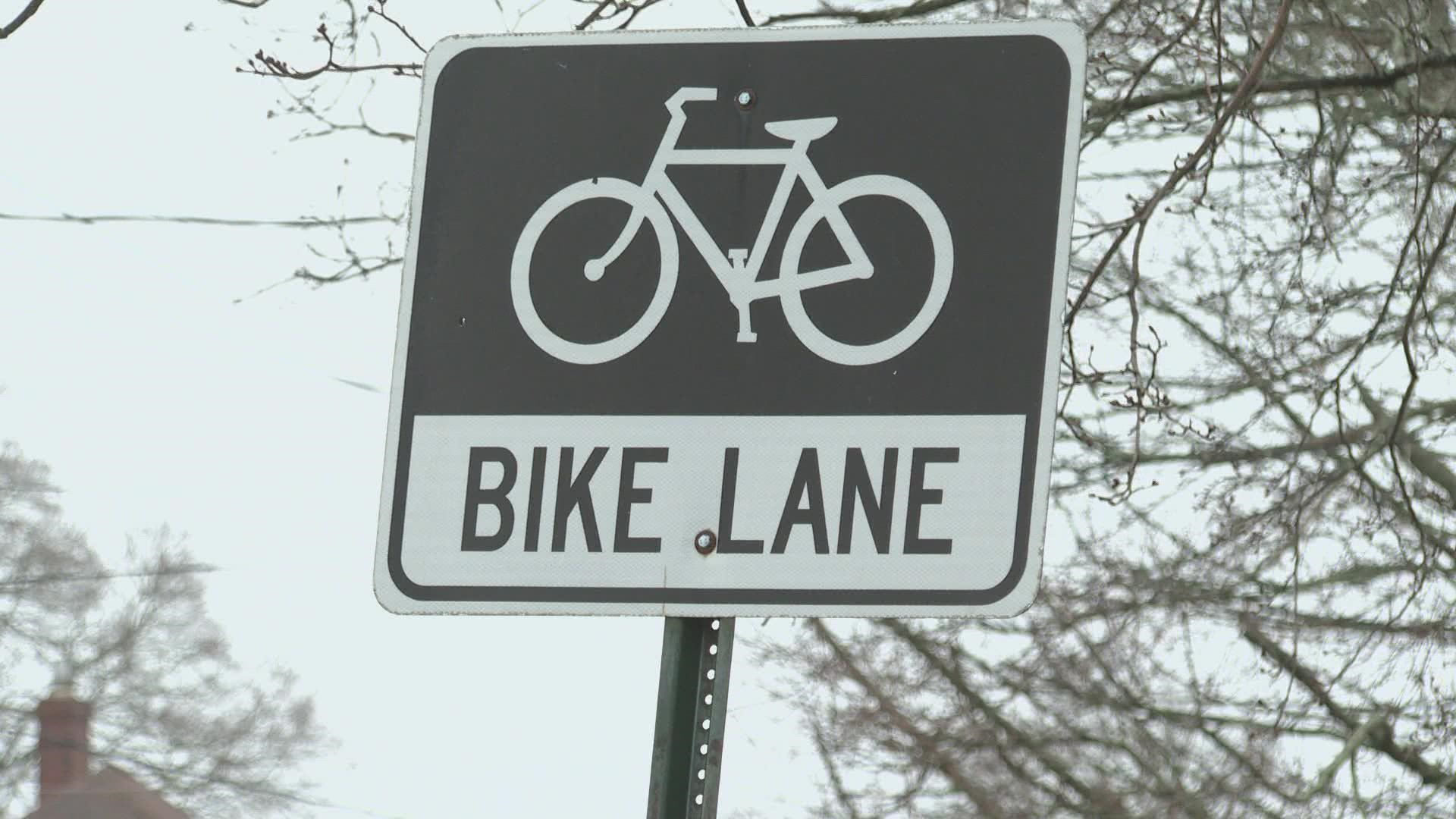PORTLAND, Maine — Portland is set to make improvements to some of its bike lanes this summer, and leaders are hoping to hear from riders about which areas it should prioritize.
"We got an allocation from the city council last fiscal year to improve some bike lanes in the city, so we're doing the public outreach process now associated with where to allocate that money, what types of bike lanes treatments people prefer prioritize, to increase the safety and comfort for cyclist in Portland," Portland Transportation Program Manager Bruce Hyman said.
The city is asking residents and riders to weigh in on which areas they think need improvements as part of it's Better Bikeways initiative. It's all part of an effort to increase the number of riders in the city, while also making it safer for them.
According to the Portland Police Department, in 2021 there were 30 crashes involving a bicycle and vehicle in the city. So far in 2022, there have just been two.
Following outreach to riders over the winter to submit recommendations as well as analysis and cost estimates, the city created a list of project candidates. Now, city staff want your input on the candidates, including what types of roadway treatments should be used and how these infrastructure should be designed.
"We've seen from other cities that have had success increasing the amount of bicycling in their communities, that they're creating more separated, either visually or physically separated bike lanes," Hyman said.
The six areas under consideration for improved bike lanes are as follows:
- Brighton Avenue from St. John Street to Falmouth Street
- Deering Avenue from Revere Street to Park Avenue
- State Street from Forest Avenue to Park Avenue, through Deering Oaks Park
- High Street from Park Avenue to Forest Avenue, through Deering Oaks Park
- Marginal Way from Forest Avenue to Franklin Street
- Veranda Street from Washington Avenue to Wordsworth
You can provide your input to the city here.
The city also is looking to learn which buffer treatments should be considered, including options, such as flex posts, wider and diagonal lines, slightly raised pavements markers, green paint, or slightly raised rumble strips.
In addition to buffer options, Portland wants to learn how much space those buffers and bike lanes would take up in certain areas.
"There's a real encouragement factor to new infrastructure, because it lets people get the sense that there is a place on the road more," Bicycle Coalition of Maine Assistant Director Jim Tasse said.
Tasse is one of the many riders encouraged by Portland's investment in bike lanes.
"It does give the bike rider a place to operate, and it tells drivers moreover, we expect bikes to be on the road here, and the community is trying to accommodate them." Tasse said. "It sends a message to all users on the road that bikes belong."
According to Portland officials, the city is also engaged in planning and designing new bike infrastructure for West Commercial Street, Veranda Street, the Bayside Trail, and the North Deering Neighborhood Byway.
The Portland Bicycle/Pedestrian Advisory Committee has also been a critical piece of the city's planning for improvements.
"Treat cyclists the same way you would farm equipment: Wait until it's safe to pass. Give them plenty of space. That's really all we can do," committee vice-chair Winston Lumpkins IV said.
"I like the idea of flex posts, personally. Even if they're not a bollard that would stop a car, nobody wants to hit one. So I think it might help in some areas for people to stay in the speeds limit," Lumpkins said.
The city of Portland will be accepting recommendations through its Better Bikeways Initiative through April 22.

